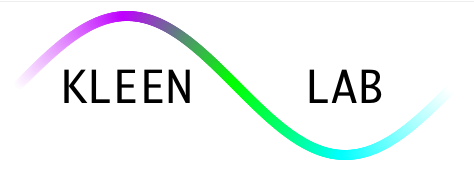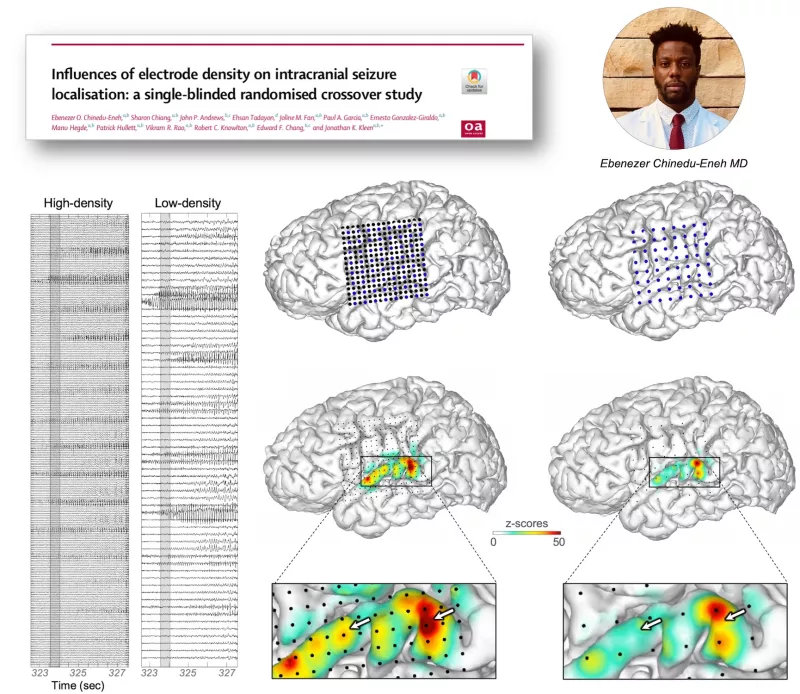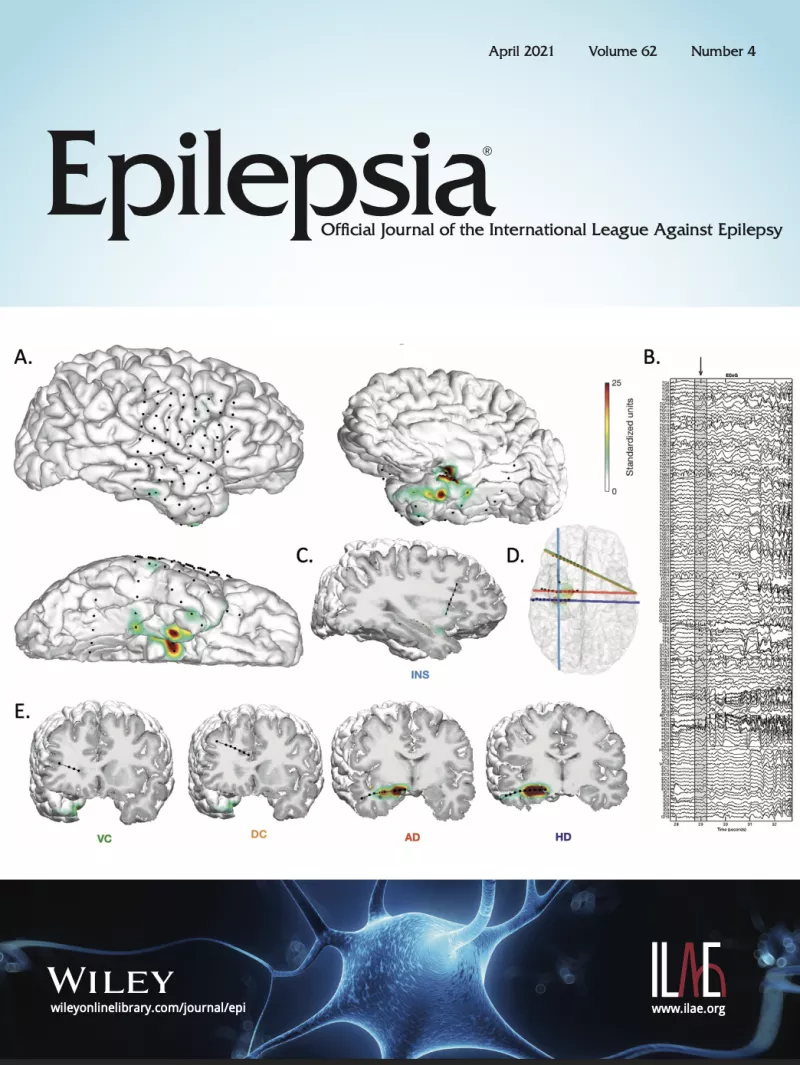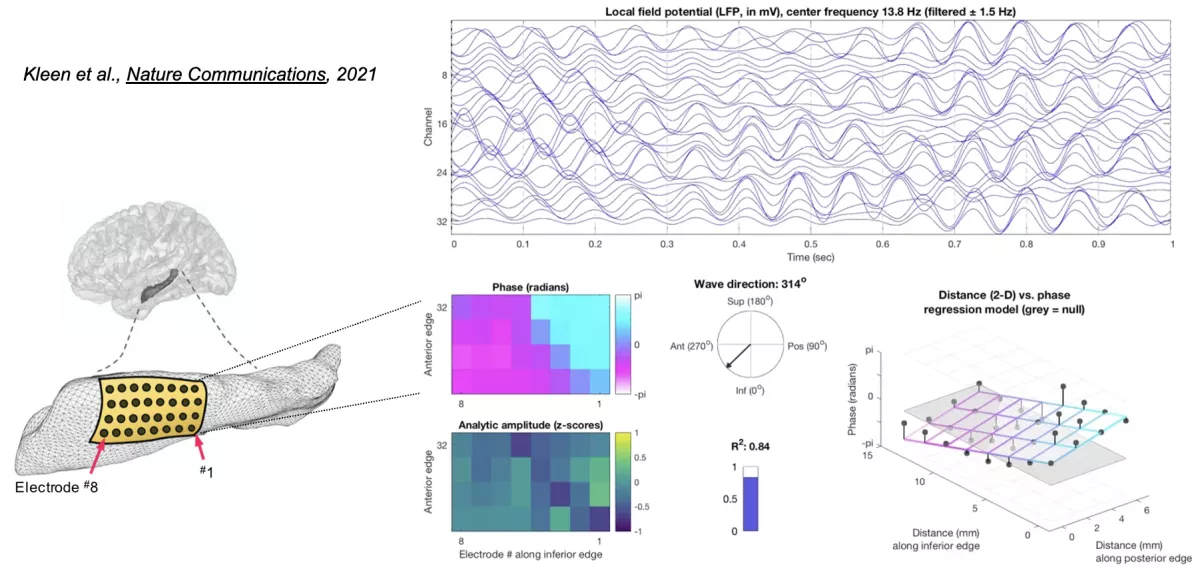Selected projects from the Kleen Lab are linked below.
The Bipolar Expedition
This was the first study we know of to systematically examine how all possible re-referencing distances between intracranial electrodes affect what brain signals we see. It leveraged nearly half a million bipolar electrode pairs. We discovered clear transition points around ~8 mm and roughly above/below 30 Hz (i.e. lower vs. higher frequency signals) likely due to traveling oscillation properties that are most pronounced in alpha range frequencies. See the distance-frequency map below for guidance on how electrode spacing, on average, influences bipolar intracranial signal measurements. Published in the Journal of Neural Engineering (2025 Nov 4. doi: 10.1088/1741-2552/ae1b3b).

High-density intracranial recordings: Clinical relevance
Are higher densities of intracranial contacts on depths/strips/grids better for finding the seizure-onset zone and its margins? This carefully controlled study by the Kleen Lab used OPSCEA heatmap technology to demonstrate that higher densities of electrodes provide better appraisals of pathophysiological margins of seizure-onset zones in epilepsy surgery. It was published in The Lancet's open-access journal called eBioMedicine (2025 Mar 3:113:105606).
See the news article: Improving epilepsy surgery by pinpointing where seizures begin
The Visual Semantic Association Task (ViSAT)
The ViSAT is a assessment of semantic memory that is non-verbal (no use of words or listening/producing speech required) to help distinguish semantic processing symptoms from acoustic, lexical, and speech-related processing (a limitation of most other semantic memory tasks). It was developed and validated by the Kleen Lab and was published in the Journal International Neuropsychological Society. 2024 Apr 15:1-9. All task materials, software, and instructions are freely available on our GitHub page!
"Ictal Cinema" (OPSCEA): Patient-level seizure heatmap visualization
We created open source software to create cinematic seizure heatmaps (videos) on 3D brain reconstructions. Basically, projecting a colorized version of seizure activity from intracranial recordings emphasizes seizure activity on the patient's own brain. Slices along depth electrodes at any angle ("omni-planar") enable this same visualization on deep anatomy, which is important given the rising use of stereo-EEG worldwide. Our work was published in Epilepsia, where this new method was clinically validated in comparison to tranditional (trace-based) review of seizure recordings.
- News article: 3-D ‘Heat Map’ Animation Shows How Seizures Spread in the Brains of Patients with Epilepsy
- Patient story: Discovering a Seizure-Free Life with Help from 3-D ‘Heat Map’ Technology
- Ictal Cinema Examples (YouTube): OPSCEA Playlist
Hippocampal microgrids, in collaboration with the Chang Lab
The hippocampus is a key structure for memory and other forms of cognition. We leveraged novel thin-film microgrid arrays along the human hippocampal surface (in vivo) to track its neural activity in 2-D for the first time. Surprisingly, all oscillation frequencies between 1–15 Hz propagated as traveling waves, and they frequently reversed directions, traveling either anteriorly to the temporal pole or posteriorly to the septal pole. The direction of the waves was sometimes even related to behavior, suggesting that hippocampal traveling waves may enable versatility for re-routing different information types during memory or other cognitive processing.
- News article: LLNL-developed thin-film electrodes reveal key insight into human brain activity
- News article: Researchers Observe New Complexity of Traveling Brain Waves in Memory Circuits
CODE LINK: MORE SELECTED KLEEN LAB PROJECTS ON OUR GITHUB SITE





